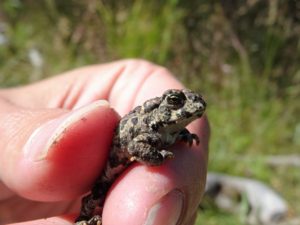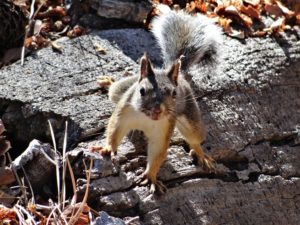“Wilderness is not a luxury but a necessity of the human spirit, and as vital to our lives as water and good bread. A civilization which destroys what little remains of the wild, the spare, the original, is cutting itself off from its origins and betraying the principle of civilization itself.”
-Edward Abbey
The seasons change and I’m off again. I have said fond goodbye to my native Utah and those delightful toads and fishes. But I’ll be back. Because Utah is special.
Now my task lies in the volcanic mountains of California. Mt Lassen is home to the youngest rocks in California having blasted into the air a mere 100 years ago. Yes, this is an active volcano complete with steaming vents, boiling lakes, and bubbling mud pots. I’m not here for the excessive quantities of sulfuric gas though. I’m here because Lassen Volcanic National Park also contains Wilderness. Not just wild places, but Wilderness.
I am speaking of the congressionally designated special places where land managers are forbidden to take any action which might diminish the wild nature of the place. No roads, no buildings, no timber harvest, not even bicycles. Some of my heroes devoted their lives to the idea that some land should be left free from the trammels of civilization. Now after 50 years the Wilderness Act continues to face challenges from all sides. Not just from trespassing hunters or snowmobiles though these surely enter our lands. But from congressional attacks, user groups seeking modification to the rules, and land managers tempted to make exceptions to the strict prohibitions of the law.
I’ve spent the last two weeks immersed in the ideals of wilderness. From reviewing the writings of Edward Abbey to pouring over government reports of wilderness management plans to sitting alone on a dacite boulder over a wilderness lake. My task is to give us a report card, to determine how well we are doing at preserving the character of the few wild places for the benefit of the future.
Over the 100 million acres of wilderness in America (don’t get too excited, most of it is in Alaska) it is near impossible to find a single way to measure the quality of a wilderness. So I’m just working on the 90,000 acres of Lassen Volcanic Wilderness. The other problem is that Wilderness is an abstract concept. We don’t have any measuring stick or probe that can be inserted into a place to sense its wild-ness. So instead I’m using proxies. Right now we have 30 proxies which together we hope will give us a sense for the health of the wilderness. Some of them look at human influence in the wilderness. Some look at plant communities and animal activities. Some look at the sense of solitude you feel when walking the forest trails. Every five years whoever is in charge of managing this place will measure the proxies we choose now to see if the character of the wilderness is staying intact.
While formal Wilderness is just those places that are most wild, wildness exists in many other forms. Deserts, marshes, salt flats, rivers, city parks, or even the weeds in the sidewalk nourish nature and give us root to the great commonalities of life. You don’t have to stand on a never-touched mountain summit to experience the wonderment of a hatching butterfly. The character of wilderness is everywhere in some degree, we just seek to preserve its full force in the cloisters of the wild.
I know the world is troubled. There is so much anger and confusion and intentional and unintentional wrong doing. We need nature. We need places to step away from the world and step back into ourselves. I can’t promise that the wilderness will solve your problems but I do believe that it can help you solve your own problems. Breath deep. Walk by the water. Feel humble yet significant. And give it another go.








You’re doing important work. I think of you every time I pocket a piece of litter on a trail 🙂
Beautiful, promising, stark, baffling, calm, healing, forceful. Still love the toad, cutie.